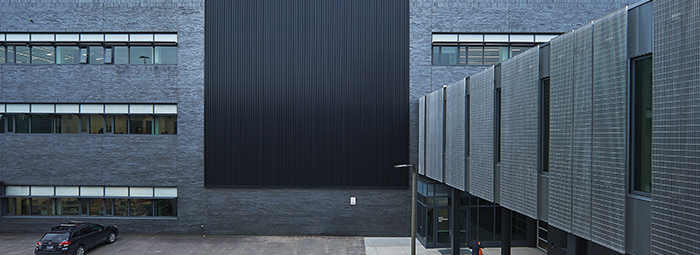
©2020 This excerpt taken from the article of the same name which appeared in High Performing Buildings magazine, vol. 13, no. 3.
About the Authors
Megan Sterl, P.E., PMP, CEM, LEED AP, is engineering and utilities manager, University Services at Montana State University, Bozeman, Montana. Kevin Amende, P.E., is associate professor, Department of Mechanical and Industrial Engineering at Montana State University, Bozeman, Montana.
Montana State University’s (MSU) campus in Bozeman, Montana, has bewcome a living laboratory to test building technologies that will achieve low carbon operation. This concept allows MSU to implement and analyze building technologies in conjunction with hands-on student research to inform campus decisions and the built environment industry. In addition, future campus energy strategy and building system concepts are being shaped by MSU students and industry professionals who are learning from MSU’s physical infrastructure.
MSU, which boasts a national and international reputation for excellence and research, is committed to a “reduce, reclaim and renewable” energy strategy on its campus that has more than 5 million gross square feet of buildings and 20,700 students. It reduces energy through a foundation of continued resource conservation and integrated design practices. Energy previously treated as waste is reclaimed wherever possible through MSU’s district energy philosophy. Renewable energy and systems that enable low carbon operation are integrated into building and utility infrastructure systems. Through this strategy, MSU is successfully demonstrating the energy strategy and technological transition needed to achieve a low carbon future in the built environment. The building and utility level approaches being implemented today will reshape the campus, commercial buildings and neighborhoods throughout Montana.
New Vision for a Low Carbon Future
The success of MSU’s first energy district pointed the way to a new vision for campus infrastructure and solidified the campus “reduce, reclaim and renewable” energy strategy. The ambitious idea of reclaiming wasted energy started with the retrofit of office/lab building Leon Johnson Hall in 2010. Constructed in 1976, the eight-story building was a textbook example of wasteful heating, ventilation and air conditioning. Offices lining the building’s perimeter use steam heating systems to replenish the warmth lost through windows and exterior walls. Meanwhile, even in winter, a steam absorption chiller extracted heat from air used to ventilate labs and other interior spaces warmed incidentally by bodies, computers and machinery. The extracted heat was discharged outdoors, unused.
The building retrofit proposed combining the heating and cooling systems into a central heat pump plant with the ability to accept future renewable energy sources such as geothermal or solar-generated energy. The simultaneous heating and cooling energy plant intended to reclaim heat from spaces that are too warm and transport it to areas that are too cool.
In 2011 when MSU graduate Jake Jabs announced an $18 million donation for a new building next door to house the business college, the ambitious idea of an energy district seemed possible: make the Leon Johnson central heat pump plant big enough it could service multiple buildings and enable energy sharing benefits.
Read the Full Article